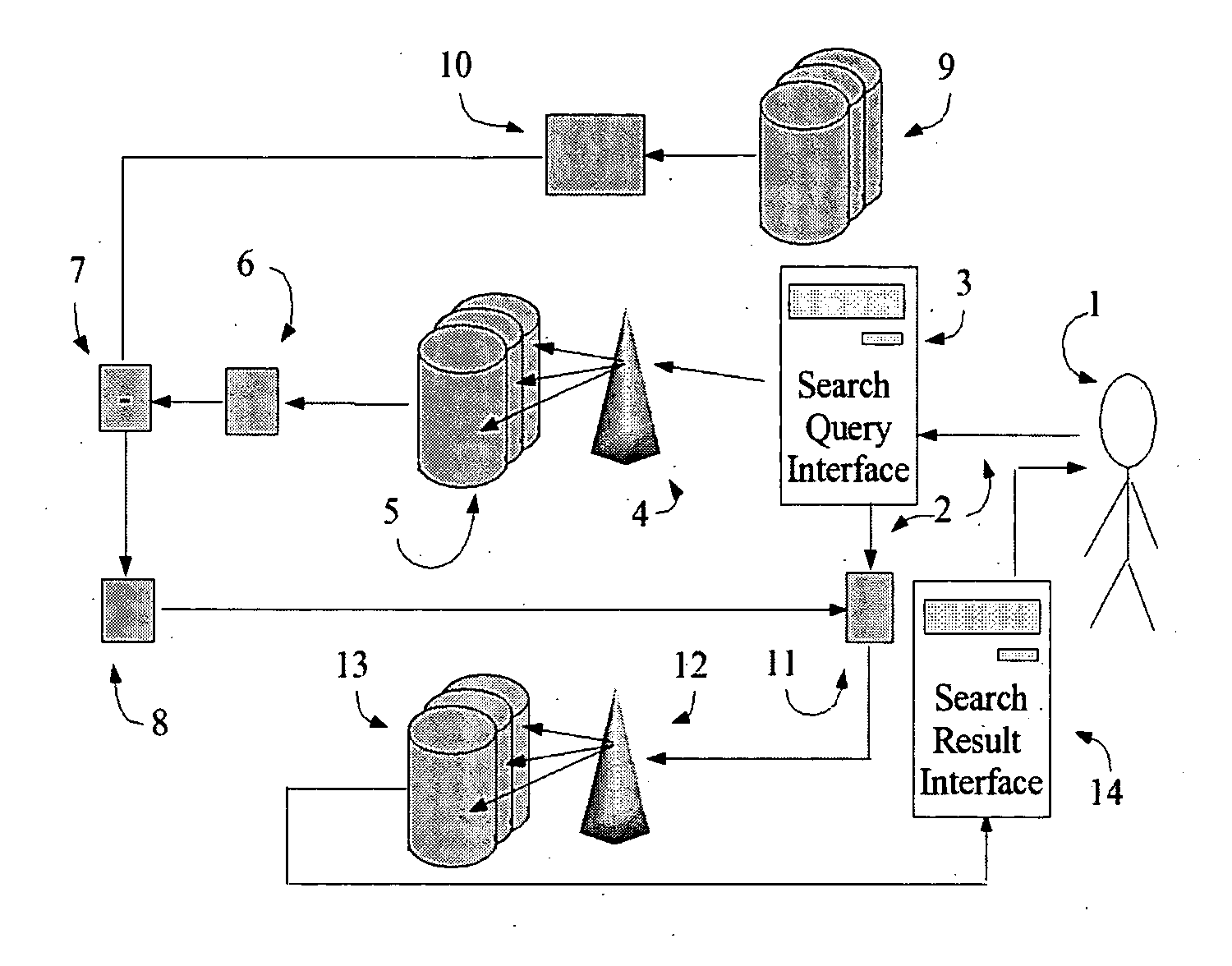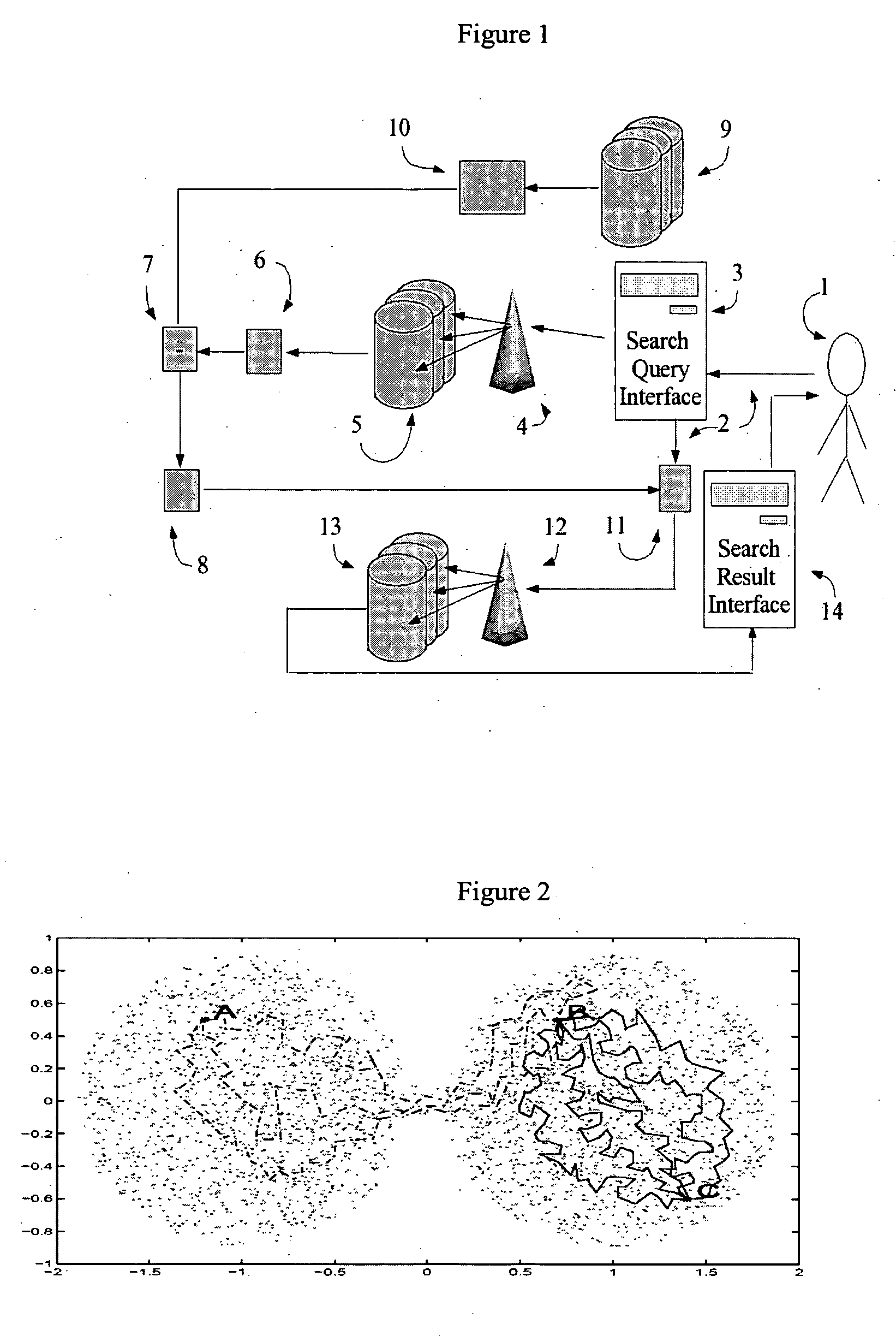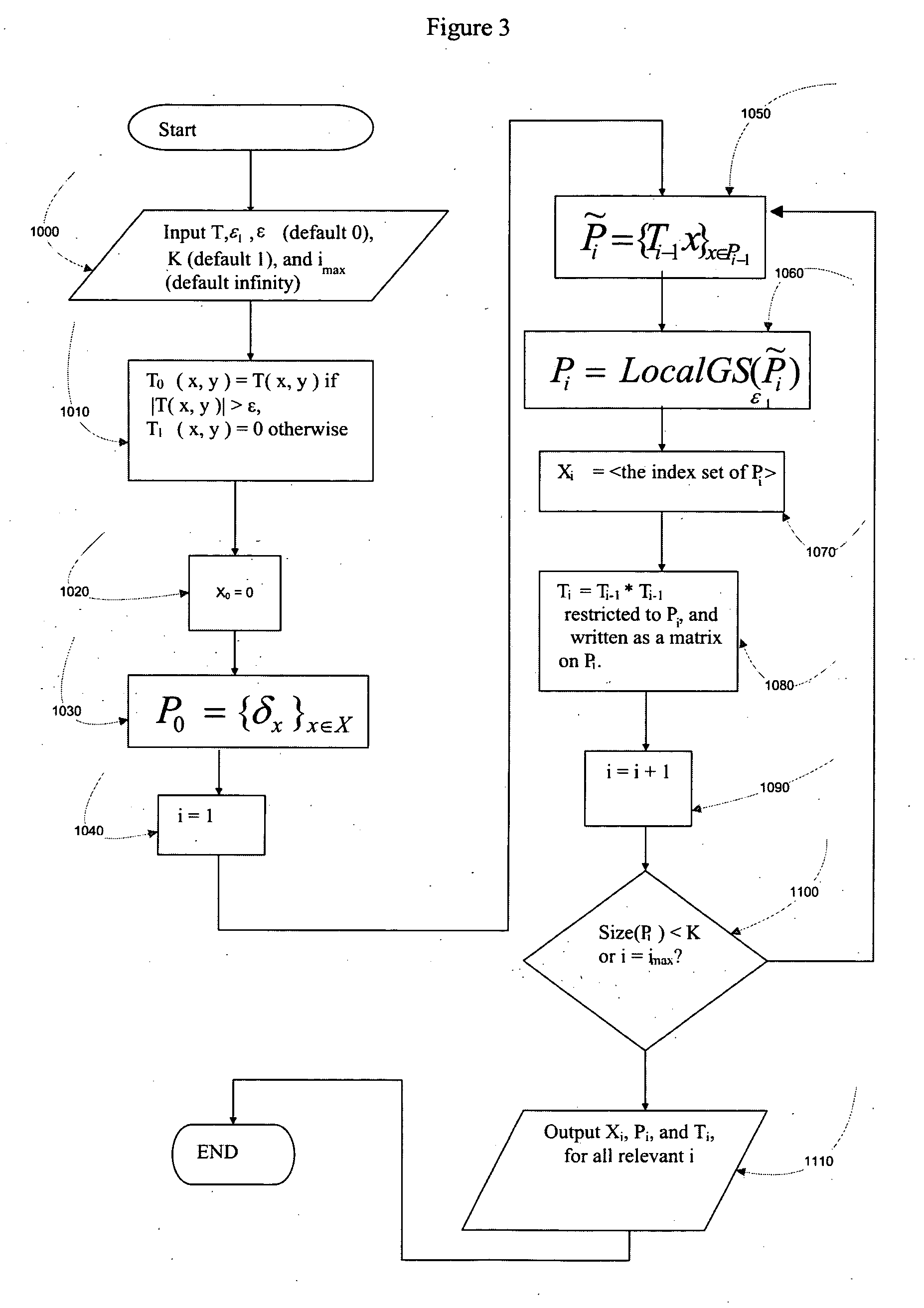System and method for document analysis, processing and information extraction
a document analysis and document extraction technology, applied in the field of personalized search of databases, can solve the problems that users do not realize the need for extra terms, and achieve the effect of increasing the amount of time and volume of data viewed, and increasing the traffic on their web sites
- Summary
- Abstract
- Description
- Claims
- Application Information
AI Technical Summary
Benefits of technology
Problems solved by technology
Method used
Image
Examples
Embodiment Construction
[0050] As shown in FIG. 1, there is illustrated a flow chart describing an exemplary method in accordance with an embodiment of the present invention (fr_matr_bin( )): [0051] Step 110: A user (1) enters a first search query (2) into a search query user interface (3). [0052] Step 120: The query (2) is sent to a first search engine (4). [0053] Step 130: The first search engine (4) performs a search on a first one or more corpora of documents (5) using the query (2). [0054] Step 140: Mean word frequencies f0 (6) are computed on the set of documents returned by the first search engine (4). [0055] Step 150: Mean word frequencies f1 (10) are computed for a second one or more corpora of documents (9). (It is appreciated that this step can be done once at initialization.) [0056] Step 160: The difference d (7) f0−f1=is calculated. [0057] Step 170: The set of words (8) is identified corresponding to those top K words for which d (7) is greatest (for some fixed parameter K), or e.g., to those ...
PUM
 Login to View More
Login to View More Abstract
Description
Claims
Application Information
 Login to View More
Login to View More - R&D
- Intellectual Property
- Life Sciences
- Materials
- Tech Scout
- Unparalleled Data Quality
- Higher Quality Content
- 60% Fewer Hallucinations
Browse by: Latest US Patents, China's latest patents, Technical Efficacy Thesaurus, Application Domain, Technology Topic, Popular Technical Reports.
© 2025 PatSnap. All rights reserved.Legal|Privacy policy|Modern Slavery Act Transparency Statement|Sitemap|About US| Contact US: help@patsnap.com



